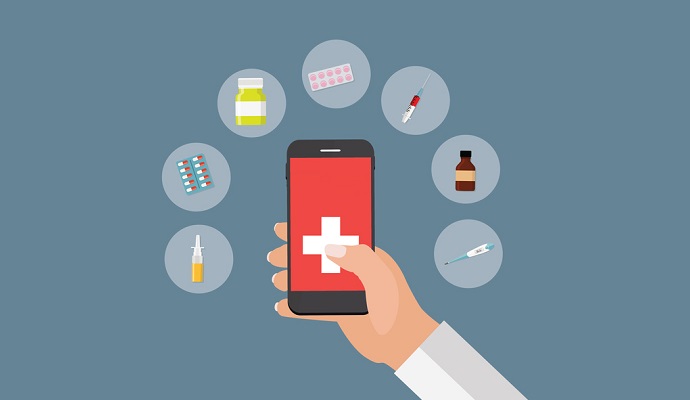Consumers, AI Will Challenge Health IT Infrastructure Leaders in 2019
As part of the healthcare industry’s ongoing transformation, health IT infrastructure is undergoing rapid change. Here's a look at what's in store for next year.

Source: Thinkstock
- As part of the healthcare industry’s ongoing transformation, health IT infrastructure is undergoing rapid change.
Seamless, future-proof health IT infrastructure development will become increasingly important as the use of artificial intelligence (AI) in healthcare accelerates and a flood of big data puts stress on legacy systems and strategies.
As 2018 winds down, healthcare organizations are looking to industry experts to forecast areas of focus and necessary investments for the year ahead.
Creating the IT architecture to support artificial intelligence, consumer-focused experiences, and blockchain will be among the industry’s greatest challenges, analysts from IDC, Forrester, and Frost & Sullivan shared with HITInfrastructure.com.
Here are their top predictions for the health IT trends that will define 2019 and how they will impact IT infrastructure.
Data Migration Supports Future-Proof Health IT Infrastructure
Importance of End-User Satisfaction to Health IT Infrastructure

Source: Thinkstock
Artificial intelligence will bring promises and problems
In its 2019 trends report, Forrester predicts that AI will affect two out of three US patients in the coming years, and many will not even realize it.
“The key vector will be the growth of commercial AI solutions — from FDA-approved, AI-based diagnostic tools to specialized chatbots for managing patient engagement — that are easy for [healthcare organizations] to buy, available through enterprise health clouds, and increasingly easy to integrate with existing systems,” Forrester explained.
Experts from IDC Health Insights agree that AI will become a major force in the healthcare industry: the technology is likely to directly affect 25 percent of organizations by 2020, according to IDC’s FutureScape: Worldwide Health Industry 2019 Predictions.
“AI holds much promise for healthcare,” Mutaz Shegewi, research director at IDC Health Insights, told HITInfrastructure.com. “For example, radiology is the best example we have of the impact of AI. We are starting to see medical device manufacturers embed AI technology that allows radiologists to do their job better and more conveniently.”
“There is also an interesting application of AI in the clinical documentation and workflow. We are seeing vendors introducing algorithms for population health. Another advanced application of AI we’ve seen recently is embedding virtual assistants to facilitate clinical documentation and workflow similar to how we would use Siri on our Apple phones to perform various functions,” he said.
To be effective in the healthcare environment, AI will require robust IT infrastructure and data standardization to ensure AI can deliver the sought-after results.
AI can also be used to improve cybersecurity at healthcare organizations. In fact, IDC predicts that 40 percent of healthcare providers will use AI and machine learning to improve their cybersecurity capabilities with automated threat detection.
“The increase in attack surface and the loss of architecture perimeter due to the digitalization of medical equipment and implementation of IoT-based sensors are progressively raising the complexity of the overall digital infrastructure,” IDC observed in its report.
“The adoption of AI and machine learning-based cybersecurity solutions will add transparency to network operations, increasing visibility and improving collaboration,” the report said.
Kamaljit Behera, transformational health industry analyst at Frost & Sullivan, said his firm is forecasting that the market for AI-driven health IT applications will total $1.7 billion next year and continue growing at a compound annual growth rate (CAGR) of 68.5 percent through 2022.
Operationalizing AI platforms for healthcare workflows will result in a 10 percent to 15 percent productivity gain over the next two to three years.
“We are seeing AI being used to convert health data from wearables and other mobile devices into actionable insights for the patient … This is going to happen massively in 2019,” Behera told HITInfrastructure.com.
Healthcare Artificial Intelligence Making Sense of Data Flood
Healthcare Artificial Intelligence Market to Reach $20B in 2024

Source: Thinkstock
Legacy systems will be inadequate for managing big data
The volume of healthcare data will explode next year, leaving organizations struggling to identify and use the most relevant data.
This data explosion will require more computing power, hardware, network capacity, and devices, along with maintenance of cloud infrastructure, servers, desktops, laptops, and storage and network devices.
“Through the adoption of enterprise health clouds and the availability of applications that put data into the hands of the healthcare customer, we will be drowning in data. This influx of data will bring a new problem — searching for signals in the noise,” explained Forrester.
Data interoperability will continue to be a challenge as ever more data is exchanged. Forrester expects next year to be a big year for the Fast Healthcare Interoperability Resources (FHIR) standard, as Microsoft, IBM, Oracle, Salesforce, and other tech giants line up to support it.
“As we look at health data wildly increasing, we see that it is trapped in individual silos. So, we must look at interoperability as a way to free up that data. We see increased adoption of FHIR,” Forrester Research Senior Analyst Arielle Trzcinski told HITInfrastructure.com.
As interoperability barriers come down, organizations will need to invest more data centers and networks that can manage the influx of new data.
An increasing proportion of that data is likely to come from patients themselves.
IDC identified the bring your own data (BYOD) trend as having an impact on healthcare next year. Patient-generated data, gathered by wearables and trackers, will become a valuable source of health data, and patients will need to have more control over and access to their health information.
Frost & Sullivan projects that by end of 2019 half of all healthcare organizations will have resources dedicated to accessing, sharing, and analyzing real-world evidence and that the healthcare big data analytics market will top $68 billion by 2020.
What are HIT Infrastructure Requirements for Healthcare Big Data?
Big Data Analytics to Have Major Impact on Pharma Next Year

Source: Thinkstock
Blockchain will not live up to the hype
In 2019, blockchain is not expected to have a significant impact on healthcare, even though the number of healthcare blockchain pilot projects will increase significantly.
“We think blockchain is overhyped. What we find is organizations using blockchain just to be able to say they are using blockchain. They are not necessarily tapping into the power of blockchain in terms of security and transparency,” Trzcinski said.
“Many healthcare pilot projects are not necessarily leveraging the core infrastructure of blockchain. They are saying, ‘We are using blockchain for this thing. Isn’t it cool and sexy?’ But you don’t need blockchain for some of these things,” she added.
Healthcare organizations need the storage and compute infrastructure to support blockchain along with the networking capability to exchange data.
Infrastructure requirements for blockchain will depend on many factors depending on what the organization wants to achieve. It’s a matter of finding the right balance of network, processor, disk, and CPU speeds.
Additional IT expertise will be required in data platforms, data warehousing, data protection and governance as blockchain initiatives expand. Master data management programs will be retooled under a blockchain paradigm, IDC observed.
Even if blockchain is not likely to steal the scene in 2019, healthcare organizations will still make progress understanding the technology and guiding it to maturity.
“Increasingly, the healthcare industry is becoming more pragmatic in terms of what blockchain can and can’t offer. It is a promising technology. It holds a lot of opportunity to unleash untapped value in stagnant, siloed data reserves. That comes from its properties—an immutable, distributed ledger,” Shegewi said.
“There are consortiums being formed. There is increasing commercialization of blockchain that is being piloted and implemented. There are a number of companies that have issued offerings through blockchain that tie to patient engagement using gamification to improve their care,” he added.
In 2019, Frost & Sullivan predicts that 5 percent to 10 percent of healthcare enterprise blockchain applications will move from the pilot stage to limited commercial availability.
Behera cited the example of the Professionals Credentials Exchange, which was launched in November to ease the administrative burden and cost of professional credentialing through blockchain technology. The exchange includes National Government Services, Spectrum Health, WellCare Health Plans, Accenture, and The Hardenbergh Group.
“This initiative is using blockchain as a sort of crowdsourcing. Each member of the network will share the most up-to-date version of credentials. This will keep the registry of professional credentials using blockchain,” Behera said.
How Healthcare Blockchain Can Help Overcome IT Barriers
Aetna, Ascension Sign On To Healthcare Blockchain Alliance

Source: Thinkstock
Digital consumer experiences will force continued innovation
The increasing emphasis on the digital patient experience in healthcare is being fueled by the move to value-based care.
IDC predicts that 60 percent of healthcare providers will make optimizing the digital patient experience a top strategic imperative by 2020 and that digital healthcare services will account for 6 percent of global healthcare expenditures in 2021.
The impact of this shift on IT infrastructure will be significant. IDC predicts that organizations will need to invest in implementing more robust revenue cycle management, customer relationship management (CRM), and provider-facing productivity tools in order to meet consumer demands.
“Digital patient experience will employ a combination of technologies, such as traditional patient engagement tools, emerging methods of patient engagement, and then the omni-experience technologies, such as virtual care, next-generation contact center, and mobile technologies,” Shegewi stated.
“Optimal data management, cloud, mobile, social, machine learning, and digital patient engagement technologies are key for providing the needed options and levels of transparency for patients to better understand and achieve their goals toward meaningful experiences,” explained IDC in its report.
To enable the digital patient experience, healthcare organizations will employ tools used in other industries to capture the real-time views of customers, asserted Forrester.
“We expect an emphasis on building a great customer experience in 2019,” said Trzcinski. “How do we adopt customer experience methodologies used in other industries? We need to make sure we are truly listening to the voice of the customer and the employee, so that that data comes back into whatever we are building for the customer.”
Trzcinski predicted that mobile devices will play an increasing role in this effort to improve the digital patient experience. “We need to figure out how do we shift that experience toward something that you always have with you. We have a camera on the smartphone. We can do a video visit, we can capture our data on an Apple Watch or some other wearable and synch with our phones. We can carry our records with us from physician to physician,” she said.
Frost & Sullivan forecasts that digital health technologies catering to out-of-hospital settings will grow by 30 percent to reach a $25 billion market by the end of 2019.
“Digital healthcare will come of age next year, with a focus on individual care,” said Behera,.
Behera said that individual care is being enabled by virtual care, telehealth, and the Internet of Medical Things. “Wearables, mobile applications, and smartphones are going to expand the scope of digital healthcare services that patients can get.”
To succeed in this challenging environment, healthcare organizations will need to devote time, talent, and resources to the adoption of disruptive and innovative technologies.
Without a comprehensive plan to develop the underlying health IT infrastructure to support artificial intelligence, big data analytics, blockchain, and more personalized experiences, organizations may find themselves behind the infrastructure curve in the months to come.
Digital Therapeutics Grows More Integrated into Care Delivery
Global Healthcare IT Outsourcing Market To Reach $61B by 2023
